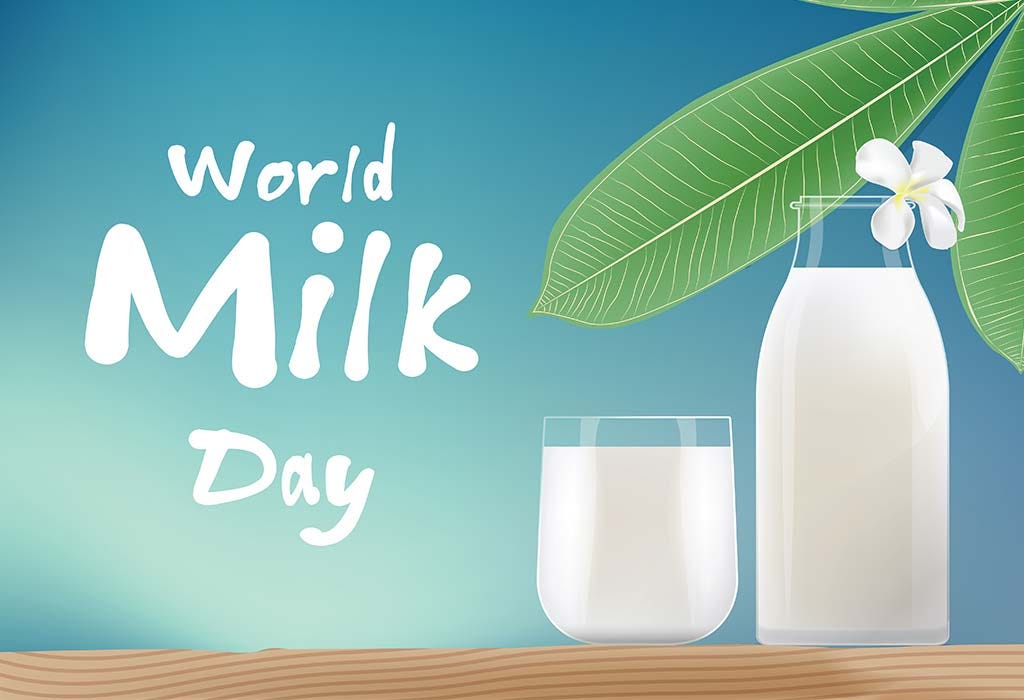#319: World Milk Day
01 June (National Milk Day: Nov 26)
World Milk Day 2025: Celebrating India’s Dairy Powerhouse
Every year, World Milk Day, established by the Food and Agriculture Organization (FAO) in 2001, celebrates the nutritional, economic, and environmental significance of milk. The 2025 theme, “Let’s Celebrate the Power of Dairy,” highlights dairy’s role in nutrition, rural livelihoods, and sustainability. In India, the dairy sector is a cornerstone of the economy, and this blog explores its achievements, challenges, and the path forward, with insights for UPSC aspirants.
India’s Dairy Dominance: A Global Leader
India has been the world’s top milk producer since 1998, contributing 25% of global milk output. From just 21 million tonnes in 1950–51, production soared to 239.2 million tonnes by 2023–24—a 63.56% rise since 2014–15. Key highlights:
Top States: Uttar Pradesh (16.21%), Rajasthan (14.51%), Madhya Pradesh (8.91%), Gujarat (7.65%), and Maharashtra (6.71%) lead production.
Per Capita Availability: At 471 grams/day (vs. global 322 grams), milk ensures nutritional security, especially for vegetarian diets.
White Revolution Legacy: Dr. Verghese Kurien’s Operation Flood transformed India into a dairy giant, celebrated on National Milk Day (November 26).
Why Dairy Matters in India
The dairy industry is a lifeline for rural India and a key driver of economic and social progress:
Economic Backbone: Contributes 6% to GDP, supporting 80 million farmers and generating 12–14% of agricultural income.
Women Empowerment: With 35% women in cooperatives and 48,000 women-led societies, dairy fosters inclusive growth.
Nutritional Security: Provides calcium, Vitamin B12, and protein, combating anemia and stunting.
Sustainability: The Gobar-Dhan scheme converts cattle waste into bio-CNG and organic fertilizers, promoting clean energy and reducing chemical fertilizer use.
Integrated Farming: India’s 303.76 million bovines and 74.26 million goats supply manure and biogas, enhancing soil fertility and energy access.
Launched to boost cooperative milk procurement from 660 to 1,000 lakh litres/day, White Revolution 2.0 targets 100 million kg daily by its fifth year. It focuses on:
Increasing milk production.
Empowering women in dairy.
Addressing malnutrition through fortified milk products.
Challenges Facing the Dairy Sector
Despite its success, India’s dairy industry faces hurdles:
Climate Impact: Heatwaves may cut milk yields by 10–30%, especially in northern states (30% of production).
Rising Costs: Cattle feed prices have surged 246% over 30 years, while milk prices rose only 68%, squeezing farmers’ margins.
Low Productivity: Indian cows and buffaloes yield less than global averages, with diseases like Lumpy Skin Disease (2022–23) causing a 10% output drop.
Unorganized Sector: Over 70% of milk is handled by the unorganized sector, lacking quality control and cold chain infrastructure.
Indigenous Breed Decline: Over-reliance on crossbred cattle (30% nationally) threatens native breeds critical for biodiversity and resilience.
Solutions to Strengthen Dairy
To ensure sustainability and growth, India can adopt:
Genetic Technologies: Use sex-sorted semen and embryo transfer to boost high-yield female calves (e.g., Kankrej, Gir breeds).
Improved Feed: Total Mixed Ration (TMR) plants by Amul provide affordable, methane-reducing fodder mixes.
Climate-Resilient Breeds: Expand Rashtriya Gokul Mission to promote heat-resistant, A2 milk-producing cattle.
Tech Adoption: IoT collars, AI-based udder scanners, and automated milking machines can detect diseases and improve efficiency.
Infrastructure: Solar-powered chilling units and upgraded collection centers enhance milk quality and market access.
Government Support: Key Schemes
India’s dairy sector is backed by initiatives like (click on hyperlinks to revise individual scheme)


